Podcast: Play in new window | Download
Healthy Landscaping – Show Notes
In this episode, we talk about what makes a healthy landscape. Do you want your landscape to be safe for you, your family, your pets, and your community?
Use these ecological landscaping tips to create a healthy landscape for your family!
Topics:
- My view
- Natural is better and healthier
- 99% of time
- Natural is better and healthier
- #1: Chemicals
- Endocrine disruptors, enzyme inhibitors
- Synthetic concentrates
- Significant health risk to family
- Read warning labels
- Even roundup – significant research coming out questioning potential health effects
- Linger in landscape
- Dog signs
- Overspray
- Smell it down street
- Read warning labels
- Bigger picture
- Runoff – greatest from home landscapes
- Significant effects
- Aquatic organisms
- Algae blooms
- Present in municipal water
- Unknown effects – e.g. DDT
- Cause dependency
- Plants get unnatural boost
- Fertilizer
- Provide short term growth and benefit
- Expense to long term health
- Reduced soil health – can kill beneficial bacteria and fungi
- Imbalance to root and vegetation growth
- “natural fertilizers”
- Some branded are not much different
- Some provide natural sources of vital nutrients
- And beneficial for soil health
- Compost
- Herbicides/pesticides
- Cure short term issue – weeds/bugs
- Create long term problem – do not fix underlying reason
- Pests are indicators of health
- Other health issues
- Mowing – noise, fumes
- Physical hazards
- Water features
- Holes
- Stagnant water
- Mosquitoes
- Electrical
- Uneven pavement
- Dead branches
- Glass
- Size of railings – fall hazard
- Clear firepit area – sparks
- Street access/proximity
- Trash – properly stored
- Pest animals
- Skunks, racoons, bees
- Healthy family
- Safe for kids
- Eat the dirt! Eat the grass!
- Healthy plants
- Less work
- Less plant stress
- Greater resilience to disturbance
- Less dependent on medicines
- Biodiversity
- Strength, resilience
- Closer to nature
- Soil health
Links for today’s episode:
- Launch Party!
- How to save 27 hours of work
- Consult with Ben
- Paul Tukey
- Rolling River Nursery
I’m Ben Hale your virtual design guide
to help you and your family have a
healthy beautiful landscape with less
work what’s up and welcome to episode 7
of the aesthetic ecosystems podcast
today we’re gonna be talking about what
makes a healthy landscape before we get
into it today though I want to just
chitchat a little bit first I don’t know
if you can hear it or not but my voice
is a little hoarse I’m got something
going on something floating around our
family right now
unfortunately my my little guys are
fighting some snuffles and sniffles
whatever you want to call them and some
coughs and stuff nothing nothing like a
major cold or anything but enough to
Kenny you know make their day-to-day
stuff not so fun and looks like I might
have got that or got something from work
or whatever so either way I’m gonna try
and keep it a little bit short today for
one because last episode went kind of
long and you know I don’t want to go
over too much today but also just to
hopefully save my voice and for whatever
reason when I get colds and stuff you
know I kind of lose my voice which of
course that’s great for podcasting right
a good choice Ben yeah I blame my mom
for that so anyway that’s that the other
thing I just wanted to talk a little bit
I’ll probably spend later talking in a
more complete podcast about this but and
I’ve already kind of talked about a
little bit I want to focus on what’s
your why for your landscape like why do
you really want to save time is it just
that it’s a burden to continue to work
on stuff when you could be doing
something else or is it something deeper
than that what could what can you do to
really motivate yourself to save time on
your landscape and all that work that
sometimes is kind of meaningless let’s
face it but if there’s a true motivator
it’ll really it’ll really put the
emphasis on
trying to move forward as your landscape
to still have something beautiful and
attractive and to be desirable and maybe
even rewarding but at the same time not
to be a burden and an obligation so
again this could be you know spending
more time with your family or freeing up
time to work on some of your passions in
your life that maybe you don’t get to
work on or to work toward a life vision
or a greater purpose and I really want
to tie those together to what we’re
doing with our landscapes here because
because to me they go hand in hand
enjoying a beautiful space having a
space that kind of gives you energy and
gives you life I want to make sure you
you utilize that to its fullest extent
and it’s not wasted that times not
wasted that energy is not wasted so just
try and take some time to reflect on
that and see what really what positive
change do you want to make is it is it
more quality time with your family or
your friends or is it something
different is it is it trying out a new
hobby or a new passion or spending more
time to travel and see the world
whatever it is try and figure that out
and that’ll really be a great driver for
you to to turn your landscape into
something beautiful
without tons of work that can free your
life up free your time up more and
overall just provide a positive benefit
and at the same time provide a positive
healthy space for you so really consider
that it’s very important to me and I
think it can also be very important to
you so try and reflect on that think
about it maybe over the next couple days
and see what kind of pops up for you is
is being important and how your
landscape and and what you can free
yourself from and your landscape can
really do for your life okay enough
about that not that it’s not important
but I think it dwelt on it enough for
for this episode and and let’s get on
right into what makes a healthy
landscape so so far we’ve talked about
in previous episodes
we talked about what makes a
low-maintenance landscape and why that’s
important what are the elements that
free up all the obligatory work in a
conventional landscape to make a
low-maintenance landscape we talked
about some good design principles that
make a beautiful landscape so what
differentiates just a you know a so-so
landscape or your typical postage-stamp
lot from something that’s truly
beautiful and really just maybe even
just it’s a subconscious thing but for
whatever reason you’re drawn to a
beautiful landscape what what are those
elements of good design that really make
a landscape beautiful and how can you
apply that to your yard so we talked
about what makes a low-maintenance
landscape we talked about what makes a
beautiful landscape so today we’re
talking about what makes a healthy
landscape and remember our tagline for
this show is having healthy beautiful
landscapes with less work for you and
your family and all of those elements
are very important to me they all tie
together into improving your life in
your lifestyle and and so let’s let’s
focus on the health piece today what
what does it mean to have a healthy
landscape for you and your family and
how do we get that okay I’m gonna kind
of preface this episode with just a
little bit of background on my personal
views and this is goes beyond just
landscape stuff and into just kind of
part of partly my worldview and this is
something that’s developed for me as
I’ve matured over the past several years
and it kind of have come to this
realization that this piece is important
to me and this what I’m talking about
here is a general worldview for me that
natural is better and healthier and this
isn’t always true it doesn’t play out in
everything I do but it’s a general
principle that I live by that that
natural whatever if it’s a natural
says natural materials generally
speaking or if it’s mimicking nature in
some way
generally speaking natural is better and
healthier and what I mean by that is so
often recently in society we’ve we’ve
gotten to synthetic processes or
whatever or problem-solution mindset
that sometimes I feel like is a singular
focus and that potentially the answer
can also be found in nature or the
problem-solution process may fix a
problem but it doesn’t fix the error fix
the symptom but doesn’t necessarily fix
the underlying problem and this isn’t
always true
there’s definitely exceptions to this
and I’m not saying this needs to be your
worldview but for me this is kind of how
I perceive things and it’s definitely
influenced the way I go about my
landscape design process and it’s a
frame of reference for how I perceive
things so yeah I just want you can to
consider that for yourself if that
resounds with you or maybe it doesn’t in
either way it’s okay and consider how
you feel about things and processes and
and what they mean to you and how that
might affect your approach to
landscaping so the way I want to
approach things today in this episode is
first kind of talk about maybe some of
the problem areas or potential health
issues with conventional landscape
processes or your typical yard as we may
call it and maybe why that could be a
problem and this is both I want to
approach this episode from two angles
one is health for you and your family
and secondly health for the plants in
your landscape and they both kind of
there’s a little bit of overlap there
and I’ll try and tease that out a bit
but I don’t want to talk in too broad of
categories but for the sake of time I’m
gonna have to go through some a little
bit of generalization here and so I may
be talking about both health for you and
your family and/or health for plants and
I’ll try and mention which one I’m
talking about
if there’s a certain specific area but
so let’s talk about some of the problem
areas with your typical yard with regard
to health the first and foremost is the
use of chemicals and by chemicals I mean
synthetic lead derived chemicals of both
fertilizers and pesticides and these
pesticides our two broad categories one
is herbicides that kill plants or treat
plants and the second is pesticides that
treat
generally speaking insects but there
there are also ones that treat you know
different molds or fungus issues and
occasionally bacterial issues as well so
the reason these chemicals can be a
problem for health again there’s two
categories here and let’s talk about the
health potential human impact to health
first a lot of these chemicals are
endocrine disruptors or enzyme
inhibitors that essentially they disrupt
pathways in the target organisms life
cycle to live properly essentially and
so it disrupts that life cycle ends up
usually killing the organism most of
these products are incredibly effective
at doing their target job unfortunately
they can have side effects and a lot of
these side effects are often disputed so
I’m definitely asking you to do your own
research here make your own conclusions
these are my general viewpoints and and
I’m perfectly fine with you having a
different viewpoint these
income as synthetic concentrates so
they’re pretty concentrated ingredients
and they can pose a significant health
risk to your family I encourage you if
you use these chemicals to read the
warning labels carefully make sure you
use it according to the warning label
and the directions and to minimize
exposure to you and your family and the
animals that come through your landscape
as well as the insects that come through
your landscape so organisms in general
you’ve heard a lot in the news recently
about these massive bee die offs as
people spray these flowering plants and
bees come to feed on these these plants
and end up dying in thousands upon
thousands of numbers and and really
disrupting populations of of insects so
as an example even roundup which is in
the conventional waters is considered
generally very safe as a herbicide so if
you’re not familiar with roundup it’s
the active ingredient is called
glyphosate and it is a general plant
pathway herbicide and it is really good
at killing most plants pretty
effectively and getting down even
killing the roots as well as the foliage
and so for its intended use it’s very
effective and generally speaking it’s
labeled as a pretty safe thing but
there’s also a lot of disputed evidence
coming out that indicates it may not be
as safe as it’s often described and so
I’m just suggesting that we exercise
caution and you can choose to make the
conclusions you want but there’s
potential risk it’s not entirely known
with a lot of these chemicals whether or
not there’s a long-term risk to yourself
your family or the environment as well
so just things to consider here
some of these chemicals can linger for
quite some time in the landscape some of
them are designed to to do that to have
extended release over time and others
don’t linger as long but in general it’s
important to consider what the long-term
effects are the long-term exposure may
be to some of these chemicals so you see
people’s yards get sprayed or whatever
and after if it’s a professional doing
it you see them put these signs out to
indicate that you need to staff the line
there’s a reason for that that it’s
actually a known risk that they’re
required to label that if you’re doing
yourself or other people in in your
neighborhood are doing it themselves
they might not necessarily put these
signs out but again there’s a reason
that it can pose a significant risk to
your family or your pets to come in
contact with some of these chemicals
it’s been shown as well that kids our
children are more susceptible to
exposure to these some of these
chemicals again here I’m making broad
generalizations but there is research
even well published acknowledged
research that these companies know about
and and put on their warning labels that
some of these chemicals are unsafe and
need to be treated appropriately so just
be careful when you’re using them I
prefer just to avoid chemical use in
general I’d rather be on the safe side
when it comes to my family and whether
or not they’re exposed to something
that’s potentially risky then to be on
the other side and assume something safe
just because there’s research that
hasn’t come out that’s been credible
enough to show it’s unsafe I’d rather
just try and correct an issue that
hasn’t might have a deeper problem as
opposed to try and fix the symptom with
a short-term solution that might be
unsafe so I encourage you to if if this
is something that’s a point of
contention for you or you’re not sure
where you stand or are just curious
about it I encourage
to do your own research there’s a
significant amount of bias in this space
so it’s it’s really difficult to try and
find unbiased information on this so I
just encourage you to try and have an
open mind to consider both there’s
generally two sides to this issue so
consider both sides of this issue of
chemical use and determine where you
stand and what’s healthy
what means health for you and your
family and and really just consider
especially if you have children or pets
what the effect on them might be so
here’s a I’m gonna run through a kind of
a list of a few more things about
chemicals here and we’ll try and move on
to talk about some other things and then
how to treat your landscape with health
when you’re applying chemicals if you’re
applying chemicals be careful about
overspray so contacting non-targeted
things if you are using chemicals also
think about the bigger picture
so is there potential for runoff a lot
of chemicals indicate that you should
only spray within a certain period
before rain is predicted it’s very
common that I see lawn treatment
companies spraying just before rain and
that’s actually contraindicated on a lot
of labels and it’s something that’s not
supposed to be done because especially
before they’re dry a lot of these
chemicals can run off and get into the
water stream waterways and into
groundwater or surface water and can
cause larger effects on aquatic
organisms and greater environmental
impact so a lot of studies have shown
that the greatest amount of pesticide
and herbicide and fertilizer runoff
occurs from home landscapes of all
things there’s a significant amount that
comes from an aerial agriculture but a
lot of times agriculture areas farmers
and applicators in those areas will more
closely follow what’s required whereas a
lot of homeowners don’t
necessarily follow the EPA guidance on
application so the runoff and wider
effects of some of these chemicals are
actually more due to home landscapes so
I strongly encourage you if you choose
to use this chemical treatment route to
make sure you’re doing it in a
responsible manner there can be
significant big-picture effects of these
chemicals to aquatic organisms algae
blooms are largely a result of home
landscape use of synthetic fertilizers
primarily the I think it’s the the
phosphorus content that leads to the
algae blooms I can’t don’t quote me on
that but I think that’s what’s the main
driver for that so just consider yeah
when you’re applying fertilizer as well
that you’re doing it in a way that will
stay on your landscape and not get in to
the sewers or whatever there’s actually
been shown to that sometimes there’s
traces of these herbicides and
pesticides that can show up in municipal
water so even after waters treated
sometimes this stuff can linger around
significant amounts of time and there’s
of course the I don’t know if you’re
familiar with the story of DDT with
Rachel Carson in the 1960s she came out
and and started to discover that DDT
which was a common insect treatment to
take care of insect problems it started
accumulating in certain organisms and
primarily in raptors so predatory birds
and it started causing these massive
effects where these predatory birds
weren’t able to produce offspring
because they couldn’t lay eggs that were
hard enough to withstand the elements
and so we started losing massive amounts
of raptors in the North America and
we’re just starting to bounce back from
that so again sometimes we just don’t
know the effects of some of these
chemicals until potentially it could be
too late so that’s some of the broad
stuff let’s talk about the effect on
plants themselves again these chemicals
like I mentioned earlier they are very
effective in treating the symptom of the
problem but they don’t always treat the
root cause of the problem and generally
speaking you get a an unnatural boost or
an unnatural benefit that might not last
the long term and so it can actually
cause dependency on a certain product so
let’s talk about fertilizers
specifically first so fertilizers do
show a boost when they’re used usually
in plant growth so you get additional
foliage the plant generally looks
healthier
so consider grass right if you spray
grass with a general lawn fertilizer you
see a significant benefit in growth
generally though it’s a short-term
benefit you’re not necessarily giving
overall health benefit to the plant most
often though there is a trade-off to
this short-term benefit so there’s
actually an expense to the long-term
health generally speaking you get
reduced soil health so some of these
fertilizers are actually potent enough
where they can kill your beneficial soil
health so this is your bacteria and your
fungi specifically or fungi I look guys
I like to say fungi I’ll probably use
them interchangeably hopefully I don’t
stop and say both every time but your
molds in your yeast in your soil it can
kill these organisms and they’re very
important for beneficial interactions
with plants and so once you start to
lose that interaction is when you start
to have more health problems pop up they
can also cause an imbalance within the
plant itself between root and vegetation
growth and it’s very important to
maintain this balance so that the plant
is properly supported on both ends from
the nutrients
Taine’s through the surface interactions
with the roots and the soil as well as
the amount of photosynthesis and light
capturing and basically of the the
above-ground machinery so it’s important
to maintain that balance for the plant
and if we disrupt it you can cause
health problems there as well okay what
about natural fertilizers there’s a lot
of these so called organic or natural
fertilizers out there and are they good
for your plants right they’re natural so
they must be good right well yes and no
it’s not always the case some of these
branded fertilizers you can get they’re
actually not much different sometimes
than your typical NPK that you might be
getting off the shelf so some of these
organic ones or whatever they might just
be a concentrated form of fertilizer
that’s derived for more natural
processes as opposed to a petroleum
derived process and so they might still
have the same issues as your typical
fertilizers your Miracle Grow or
whatever that you might get off the
shelf and so it’s important to consider
what type of amendment or fertilizer
you’re looking at if it’s something that
is a kind of more natural source meaning
like it’s a like a compost type
amendment or something like that it
might provide a longer term release of
similar nutrients but in a more balanced
way that is more closely associated with
something that might be present
naturally in the soil in a healthy soil
ecosystem it also might be something
where it’s less harmful to the soil
itself with it doesn’t necessarily kill
the bacteria and fungi in the soil so
it’s something to consider there I have
to speak in generalizations here because
it’s it’s something that’s so broad
there’s so many different types of
amendments that it’s something you just
kind of have to try and diagnose and
figure out yourself without me going
into details on it every single brand of
every single product the other thing to
mention here is some amendments are
actually very beneficial for soil health
and there are also benefits for plants
at the same time so those types of
amendments are better again it’s
something with a low maintenance
landscape it’s something you want to
hopefully do maybe in the short term for
establishment or to restore health of
something that might be out of balance
but something you’d want to avoid use of
in the long term just for the your own
sake of work even though it might be a
healthier type of amendment or chemical
use the other piece here is compost is
essentially a natural fertilizer or
amendment it’s a broken down a process
of organic material usually rich in soil
life so you have micro crustaceans you
have protozoa you have fungi you have
bacteria hopefully in a good balance
with each other
yeah in the healthy organisms as well
because there’s healthy and unhealthy
ones so hopefully you have healthy ones
in a good compost and you also have a
good balance of nutrients present you
have good amount of organic matter
present you have humic acids present so
all of these things are very important
for good plant health and it’s kind of
in a concentrated form in compost so
it’s definitely something you don’t want
to add a heavy amount it can actually
hurt plants as well but it’s a gentle or
amendment and some of the synthetic
chemicals that you might have okay on to
herbicides and pesticides these often
are used to again kind of cure a
short-term issue or a specific issue so
it might be like a leaf mold that you
have might be a certain plant invasion
that you have a certain insect invasion
you have maybe your overrun with aphids
for example but a lot of times these
create a long term problem there’s a
couple reasons for this one they don’t
fix an underlying the underlying problem
itself generally they fix the symptom so
you might think if you have a fits right
that that’s the problem that you have a
fits but it could
be a much deeper issue you might have a
weakened plant that the aphids are
attracted to you might have an
out-of-balance predator-prey
relationship where there’s nothing there
to eat the aphids before they come a
problem so a lot of times the problem
you think you’re solving you might just
be kind of kicking it down the road a
little bit farther and you’re going to
continue to have that issue or other
issues that that surface with that plant
or with your landscape as a whole
another thing they potentially create a
long term problem with especially when
it comes to pesticides that are killing
targeting insects most specifically or I
guess or that are targeting a certain
type of microorganism like a fungus that
usually when you use these products
you’re not only killing the target
organism but you could potentially be
killing their predators so it could be
if it’s a an antifungal spray you might
not only be killing the the targeted
leafmold that you have or rust or
whatever but you’re also killing all the
beneficial organisms that could
potentially have out balanced that
problem in the first place so you want
to build resilience as opposed to just
try and fix the problem by killing
everything the same goes with the insect
piece so if you’re targeting say a fizz
since I already mentioned it you might
be killing the ladybugs that feed on the
aphids and so by killing the pest insect
you are also potentially killing a lot
of predator insects that you could be
building up in your your landscape to
prevent the problem in the first place
so it’s just something to consider here
it’s it’s generally speaking it’s more
difficult to fix the underlying problem
but it’s very important to think about
it and consider how you can do that the
last bit I want to say here is that
pests they’re often given a bad rap and
for good reason but the other way to
think about this is that pests
are generally speaking they’re
indicators of health and so if you try
and look at it from a different
perspective and to really diagnose
what’s the true root of the problem here
it can go a long way toward fixing the
the overall problem and give you better
overall plant health in your whole
landscape as opposed to trying to fix
one specific problem and I think it’s
the next episode I’ll actually be
talking about this and a lot more depth
but I just want to kind of drop that
here and I guess for a an analogy think
about like food allergies right so
here’s a good story so I have a close
friend who he he’s gets really really
really bad gas after eating asserting
certain foods and so there’s kind of two
ways to look at this problem right it’s
it could be he could just continue to
try and fix the problem by you know
something like Beano right that could
take care of the problem but with
diagnosing what types of food
he’s eating at what times and when he
has the problem he’s kind of gotten to a
root cause that he has some sort of
issue with dairy it which is not
uncommon and so he’s finding he has to
figure out okay do I try and fix the
root cause and to more conscientiously
think about when he’s consuming dairy or
does he continue to consume dairy and
just fix the the later problem of the
the gas the symptom that’s coming
through so it’s kind of an example of
you could choose to just work on the
symptom but if you dig into what’s the
underlying problem what’s causing the
symptom to happen it could lead to
better overall health and I suggest you
do that with your landscape if you have
a bad gas issue too I would suggest
looking deeper as well alright okay
let’s talk about maybe
we definitely dwelt quite a bit on
chemicals but there are other health
issues with your landscape that I I
really suggest you consider in with our
landscape when we moved into our home a
lot of these issues were also present or
still are present so it’s just something
to consider when you’re trying to frame
your landscape as being a healthier
landscape these are definitely important
elements to consider so first what about
water features
what sort of water features do you have
in your landscape or in neighboring
landscapes that might be a health risk
to you your family or maybe even your
pets so a lot of these things I’m
talking about here are significant risks
to pets or kids and water features is
one of those where if you have a pool or
a pond or whatever they can be a
significant health risk to your children
sadly there’s so many children that
drown each year due to somehow being
left unattended accidentally usually and
and they wind up in some sort of water
feature or following a pool or something
and and tragically drowned
so it’s important to consider safety
with your landscape and how you can
somehow protect your children or your
pets from getting into that situation in
the first place
and so for us our neighbors we have a
couple neighbors that have pools and
that have ponds and so we have to be
extra vigilant for there’s one pond
specifically nearest that is not fenced
and so we have to be extra vigilant with
our children when we’re outside to make
sure that they aren’t at risk for that
sort of thing okay holes we have a few
holes in our landscape that can be in
just a general hazard for walking or
running especially in the dark which has
happened a few times as just a falling
or tripping hazard and so it’s just
something to consider can you somehow
remove or cover that hole or just in
general Tripp
hazards throughout your landscape and
these could even be roots so how do you
direct foot traffic away from routes
that maybe are raised above the ground
that could become an issue
what about stagnant water and then I’m
not necessarily talking about ponds and
stuff here but but just areas where
water can pull up they can become a
breeding ground for mosquitos they can
become stagnant and have non beneficial
organisms that are breeding they’re
proliferating and can be a toxic hazard
to your animals if your kids get into it
they and they might drink it or whatever
it could cause sickness as well but yeah
and also just for mosquito breeding it’s
becoming more of a more more and more of
a concern with mosquitoes so just
consider that what about electrical
hazards so are your outlets protected
are they in an area that kids won’t be
accessing them do you have any
electrical that’s maybe shallow
shallowly buried or not properly
protected that should be fixed or
repaired things like that uneven
pavement this is a common one we have a
driveway which we haven’t yet replaced
because you know driveways are a
significant expense but is something
important to consider that may be what
we’ll have to do is kind of shave it
down but the pads have become uneven to
the point where they’re a tripping
hazard and do you have a driveway or
pathways walkways that pose similar
hazards where there’s uneven pavement
that can be danger for anybody
especially kids and elderly people
walking down them dead branches are a
common one do you have anything you know
in the woods these are well not just in
the woods but these are called
widow-makers for a reason so do you have
any dead branches or parts of trees that
should be removed before they become an
issue with falling on somebody or
something so just make sure you always
look up and see what you
in your trees and if they need to be
taken care of blasts we’ve found a ton
of glass in our backyard after we moved
in and we’re still finding and
occasionally glass and shards of glass
pieces of metal just general things that
can you know poke your feet and so we
actually have to I would love to have a
landscape where my kids can just run
around barefoot and we’re not quite
there yet because we continue to find
little bits of stuff each year that can
be a risk so if you have any of that in
your landscape definitely try and remove
it if you can and it’s it’s so difficult
but just keep an eye out for it and try
and avoid creating situations that might
cause some of that what about size of
railings this is also something in our
landscape that we have is is we have a
deck it’s a second-story deck and
there’s a staircase going up to it the
railings aren’t properly spaced the the
supports on the side railings and their
their gaps too wide to where they’re a
hazard for children and so just
something to consider as well also where
they the correct height a lot of times
with do-it-yourself type projects people
don’t necessarily build stuff to code
and so it’s important to think that
you’re building a railing I enough to
where it’s not a fall hazard so make
sure it’s high enough to where if
somebody bumps into the railing they’re
not more likely to topple over it as
opposed to being as something that can
protect them what about a fire pit
especially in dry regions make sure your
fire pit area is clear from spark
hazards so you cleared it of dried
material dead material within a certain
radius as well as above it so make sure
if you have sparks coming from your fire
or coals or whatever that they’re not
going to catch something and cause of a
larger problem okay guys that’s enough
about the health issues let’s talk about
healthy family and healthy plants and
what causes or what what we can do to
build health in our landscape and man
I’ve looked down and I realized this is
deaf
only a long episode I’ve gone a long
time on the problems I actually intended
to go pretty quickly on that but you can
tell that these things are so important
to me I had to kind of dwell on some of
the the negative stuff first
unfortunately but overall it’s to kind
of give us a mindset of to what to build
toward and so let’s talk a little bit
about that unfortunately I’m gonna go
maybe a little bit faster on this stuff
then I originally tend to intended but I
don’t want to spend too much time here
as well so am i voice I can feel it kind
of going already so let’s let’s get
through this okay so for health with a
healthy family there are there is one
guiding principle for me and how I
perceive landscapes and healthy
landscapes and that is if it’s safe for
kids if it’s something that’s safe for
kids it’s most likely safe for adults or
your pets as well and and me having
three young children and seeing how they
interact with spaces especially
landscapes is is something that has been
it’s very insightful in revealing for me
and and how I perceive my landscape and
other landscapes that are designed and
how they’re healthy I mean the examples
I have here is I know this is here’s a
good story for you guys so as a
four-year-old there is a age-old story
that I’m told when I was a yeah I was
four we were going fishing and so I have
two older brothers that were with me my
grandfather was with me and I was
fishing well supposedly fishing I was
there and so we have our you know our
little bucket of worms and we’re bobber
fishing for our hopefully you know
trying to catch a bass right but more
likely we’re pulling in blue gills left
and right and my brother’s turn around
and suddenly wonder where all the
fishing bait go
well here I sitting on the dock with the
the bait pail in my hand and turns out I
ingested all the worms in the bucket for
whatever reason I guess you know what I
haven’t tried it since but I guess worms
are a pretty good delicacy tastes great
and so I highly recommend them haven’t
tried in since I was 4 but but anyway my
point here is that no matter what no
matter how careful you are with your
landscape kids are going to ingest part
of your landscape so if your landscape
is safe enough where you can eat the
dirt then your landscape is good and
that’s kind of how I perceive things
I’ve definitely seen my boys while I try
not to let him do it I’ve seen them put
grass in their mouths a little bits of
dirt in their mouths and you know what
though at the end of the day I know that
my landscape is safe enough for that to
happen and so kind of try and use that
frame of reference for your landscape is
it something safe enough to eat not that
I recommend eating anything in the
landscape unless you have an edible
landscape but just having that mindset
can really make a difference on how you
build health in your landscape so I
guess with that what I’m saying is eat
the dirt and eat the grass and
disclaimer here I’m not really
recommending that I guess I have to say
that right but what I’m saying here yes
is design your landscape healthy enough
where if that were to happen that it’s
not a health hazard as far as healthy
plants go I’ve really you know drilled
this and pretty much every episode we’ve
talked about already but healthy plants
what that means for you is less work
it also means less plant stress because
your plants are happier they’re living
in a way that they’re supposed to live
that they’re designed or evolved to live
and for that reason a healthy plant
means a happy plant means less stress on
the plant which means a half year you
because you don’t have to sit there
trying to figure out why your plants not
growing properly of course this also
greater resilience to disturbance so
whatever this disturbance may be maybe
it’s temperature extremes maybe it’s
heat you know and cold or it could be
water extremes but if your plant is is
for lack of a better term if you plan is
more well rooted if it’s living happily
it’s more likely to bounce back from
stressful situations compared to a
weekend plant that will manifest maybe
disease symptoms or or partial death or
complete death and so greater resilience
to disturbance is what you get with
healthy plants and you also of course
they’re less dependent on medicines and
those are all the chemicals we talked
about we spent probably too much time
talking about but those essentially are
plant medicines if you think about it
and so the healthier happier plants
don’t need the medicine in the first
place and that’s a great place to be so
a last piece I want to touch upon here
before wrapping up is that biodiversity
is a good thing you know it designed
properly it’s not only a good thing but
it’s an appealing thing so in your
designed landscape how can you have the
plants you want and also get diversity
at the same time so what I’m talking
about here is that plants are evolved to
live in a in their natural ecosystem
they’re evolved to live with other
plants that are generally speaking very
diverse but going beyond plants they’re
also evolved to live in systems where
there’s interactions with insects and
micro crustaceans and protozoa and
nematodes and bacteria and fungus in
yeasts all sorts of things that that
build this network this food web of
intricate organisms of interdependent
relationships that lead to overall
health in a good balanced ecosystem and
so if we can get this amount of
biodiversity or some semblance of that
biodiversity that these plants are
evolved to live with in our own
landscape then we’ve hit a homerun we’ve
won our plant is happy
it’s healthy it’s gonna live on it’s
gonna be better resilient to stress it’s
not gonna need inputs of chemicals or
time or work and you’re gonna have your
beauty that you want so when you have
your biodiversity you’re more strong
you’re stronger you’re more resilient
you’re also closer to nature so it kind
of goes back to that first point I made
with my viewpoint is that generally
speaking natural is better the plant
evolved in a natural setting and so if
we provide something close to its
natural setting it’s going to be happier
and you’re gonna have your soil your
healthy soil that supports that plant
okay so I’m gonna wrap up there so
overall my point here is that healthy
plants mean happy plants healthy
landscape means healthy people when it
comes to interacting through landscape
if your your landscape is safe enough to
enter your kids mouths maybe not to you
know be swallowed but if if your kid
gets a handful of grass and dirt in its
mouth his or her mouth is is that okay
or are you gonna be freaking out if if
so maybe then your landscapes not
healthy enough maybe you could work on
that and so I’m gonna leave you with
that if this stuff you know trying to
get a healthy landscape sounds
overwhelming to you I’m gonna suggest
you can as one option what you can do is
I am open to consultations right now so
you can go to aesthetic ecosystems calm
slash consulting to have a chance to
work one-on-one with me digitally so you
can sign up there to have a consultation
with me I can help you get started on
this stuff and if if something if you’re
just looking to get started right now
without having to do too much what you
can do is I’ve put together an awesome
resource on how you can save 27 hours of
work in your landscape with just some
simple habit changes you can check that
out at ascetic ecosystems calm slash to
seven hours and that’ll take you to this
awesome resource okay now it’s time to
talk about the launch party
as excuse me not party but partay the
launch party is for the first two months
of the show from March 11th through May
help spread a war spread the word about
the show I really appreciate your
enthusiasm and interest in this show and
I want to get you guys involved and have
some fun while we’re doing it so this is
a chance to have some fun too for us to
get connected to win some prizes and
let’s talk about the prizes before we
talk about what we’re doing so what are
the prizes weekly I am offering a free
consultation with me Ben Hale which is
normally a $99 value so one person each
week that gets involved in the launch
partay gets a free consultation I’m also
giving away a free offer for one of my
ebooks ten ways to get more beauty with
less work which is the $19 value next
the grand prize there is only one of
these were giving away through this
whole launch party so at the end of the
launch partay the organic lawn care
manual by Paul Tookie so Paul Tookie
himself has offered to give away one
free book to a lucky winner that’s
getting involved in this launch party
and this book is all about how to manage
a healthy lawn from anything from a golf
course style on to your low-maintenance
lawn which of course is something I
prefer here on this show right I own
this book I’ve read this book multiple
times I’ve given it away it’s a kind of
a tattered and worn version that I have
and I use some of these practices in my
own lines so I love this book and I
highly promoted as well and you’ll hear
me talk about it throughout the show but
Paul Tookie has been kind enough to
offer a copy of his book as a grand
prize and there’s also a special
surprise for everybody that’s going to
be getting involved in the launch partay
the rolling river nursery out of
California has offered a special
surprise for everybody that’s involved
the rolling river nursery is a USDA
certified organic nursery so I went
online and I looked around for nurseries
that have online availability ship
through the continental US and have some
great offerings and
River nursery is being kind enough to
become involved with our launch party
and they’re not only are they online
availability but they also are certified
organic which means they don’t use any
harmful herbicides or pesticides that
you have to be concerned with your
family about and so what you’re getting
is a safe and healthy plant they also
offer a ton of edible plants and Crees
and shrubs cacti and succulents so they
offer several trees and shrubs that are
adaptable throughout the most of the
United States so definitely worth
checking them out and in addition these
guys are also involved with a non-profit
in Southern California to help local
food movements called planting justice
org so if you want to learn more about
them you can go to rolling River nursery
calm and I also want to give a shout out
to Paul to Kies website for his organic
lawn care manual and his other works is
Paul to keep calm PA UL t uke Y and to
sum up guys okay you want to learn how
to get involved with this launch party
go over to aesthetic ecosystems calm
slash pod launch and that’s p OD lau NCH
there’s a link in the show notes and
that’s that’s gonna give you all the
instructions on how to get involved
there’s two ways specifically to get
involved one is through sharing with
your peeps on Facebook and the other is
through leaving a review on iTunes
both of these are gonna help spread the
word about the show and get other people
other friends listening to it as well
and I sure appreciate your help here and
and likewise this is gonna be a fun time
so so going over and to aesthetic
ecosystems comm slash pod launch to get
involved overall I just want to say
thanks so much for listening I hope you
this this podcast gives you the
inspiration to change your life through
your landscape go on over check out the
show notes there we’ll have links to the
that you subscribe if you like the show
that’ll get these episodes delivered
right to you when they come out and also
if you like the show
consider going over to iTunes or
stitcher or your favorite listening
device and leave a review these reviews
are awesome at getting us to reach more
people that care about their landscapes
and want to make a positive difference
in their life and also their landscape
and to wrap up I just want to say thanks
for tuning in and make sure you live
with passion and make tomorrow better
than today
[Music] [Music]

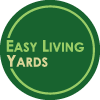
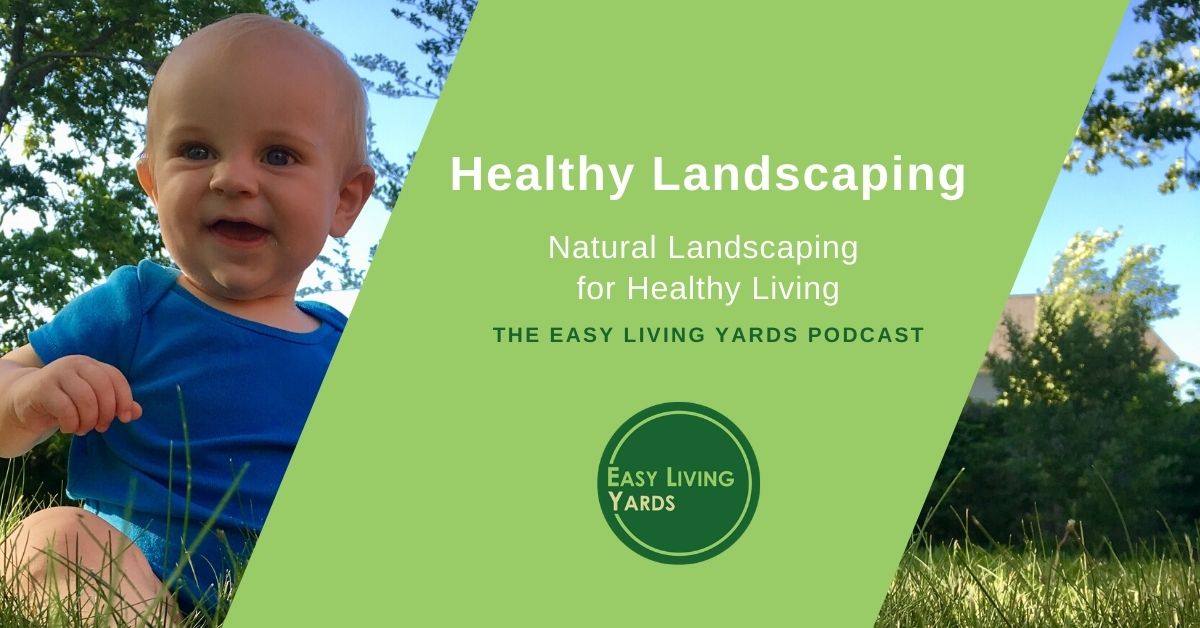
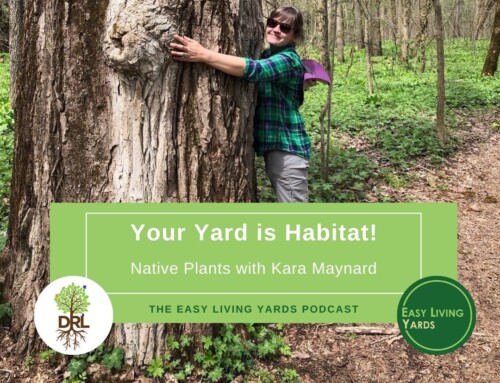

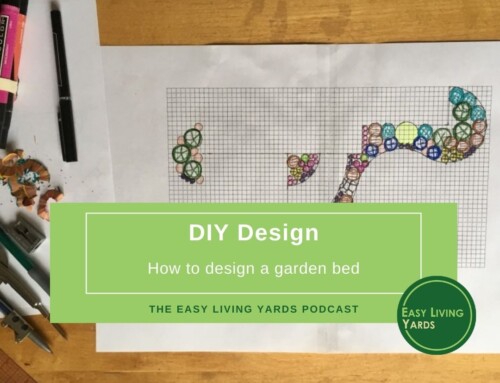

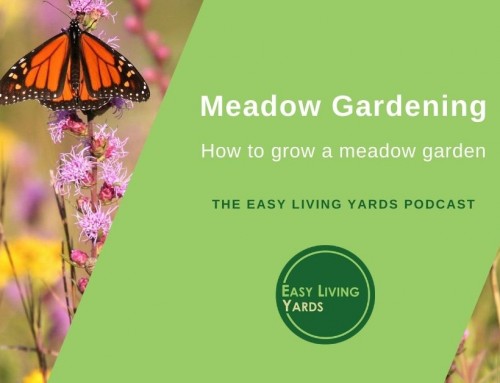
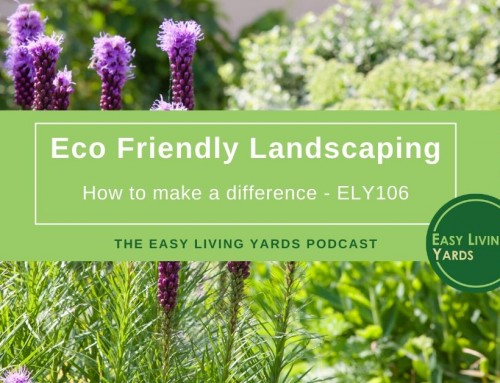
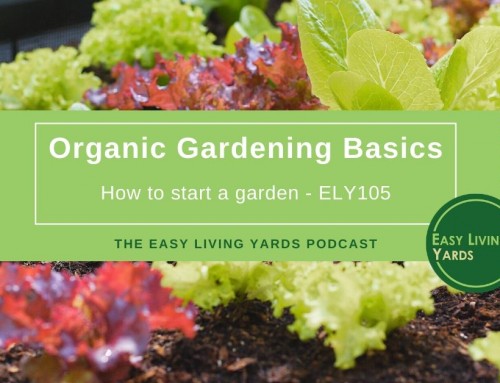
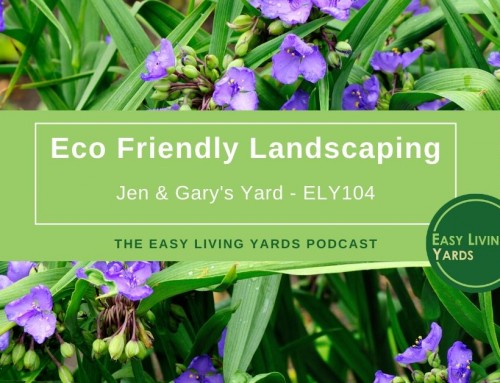
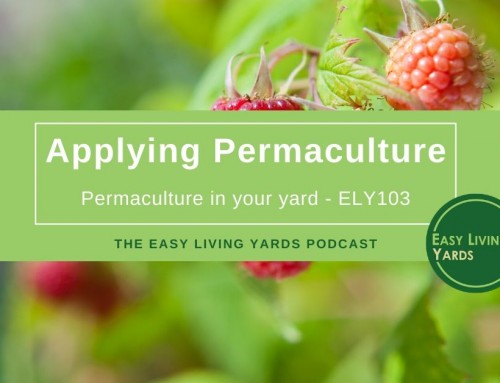
Leave A Comment